The High Cost of Bad UX: 7 Stats Every Business Should Know
 Sandip Bhandari
Sandip Bhandari
In today’s competitive digital world, user experience (UX) is crucial for a business's success. Many companies still overlook the impact of poor UX, resulting in negative outcomes like lower customer satisfaction, revenue loss, and damage to their reputation. Here, we’ll look at 7 key statistics that show why businesses must focus on great UX—and the serious consequences of ignoring it.
88% of Users Won’t Return After a Bad Experience
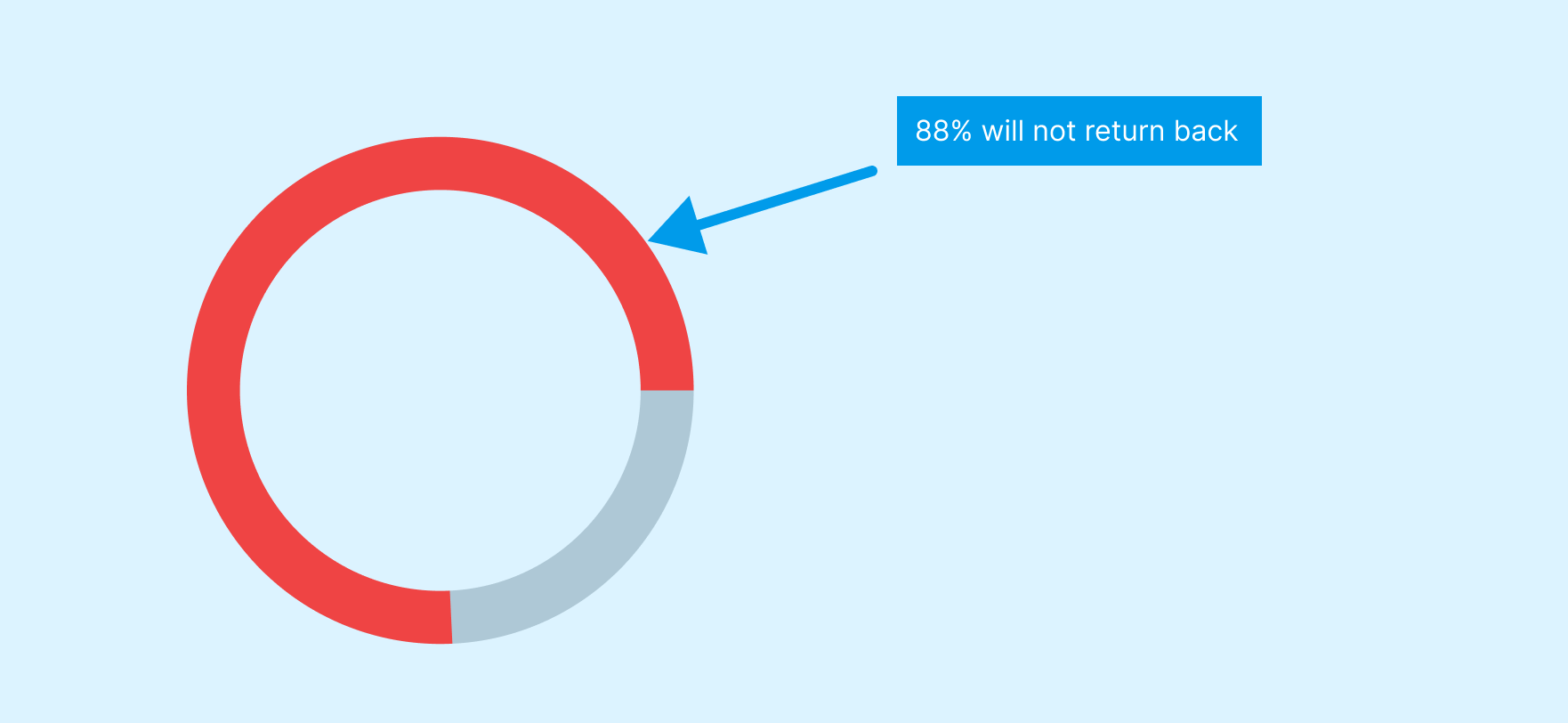
A negative first impression can cost you more than just one sale—it can cost you a customer for life. Research reveals that 88% of users are unlikely to return to a website after a poor user experience. This includes factors such as slow load times, complicated navigation, or a non-intuitive interface.
Tip: Regularly conduct usability testing and audits to uncover pain points before launch. Use behavior analytics tools such as Hotjar, Google Analytics, or Crazy Egg to track user actions and adjust based on data-driven insights.
Poor UX Costs Companies $2.6 Billion Annually

The financial toll of bad UX is staggering. Globally, companies are losing a combined $2.6 billion each year due to poor user experience. This loss is felt through a variety of ways: abandoned carts, high bounce rates, and low user engagement.
Tip: Optimize your user journey by focusing on key friction points. Ensure that forms are easy to complete, minimize the number of steps in the checkout process, and streamline navigation to reduce user frustration.
Every $1 Invested in UX Yields a $100 Return
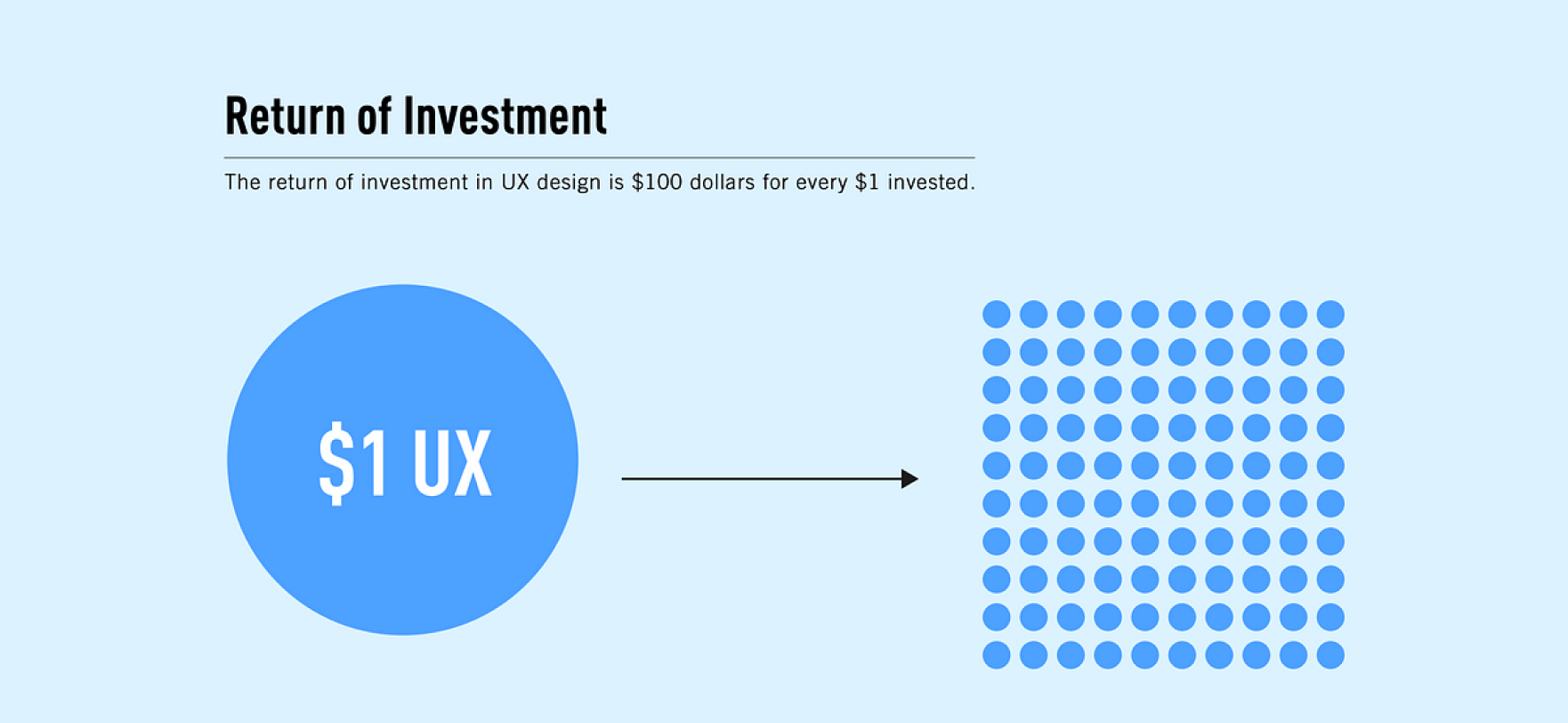
One of the most compelling arguments for investing in UX is the remarkable return on investment (ROI). For every dollar spent on UX improvements, businesses can expect an average return of $100, equating to a 9,900% ROI.
Tip: Focus on continuous UX improvements. Begin by investing in user research and prototyping. Conduct A/B testing to determine which design elements resonate most with users, and use iterative design processes to refine the user journey continually.
Bounce rate increases by 123%, If page loading time becomes more than one second
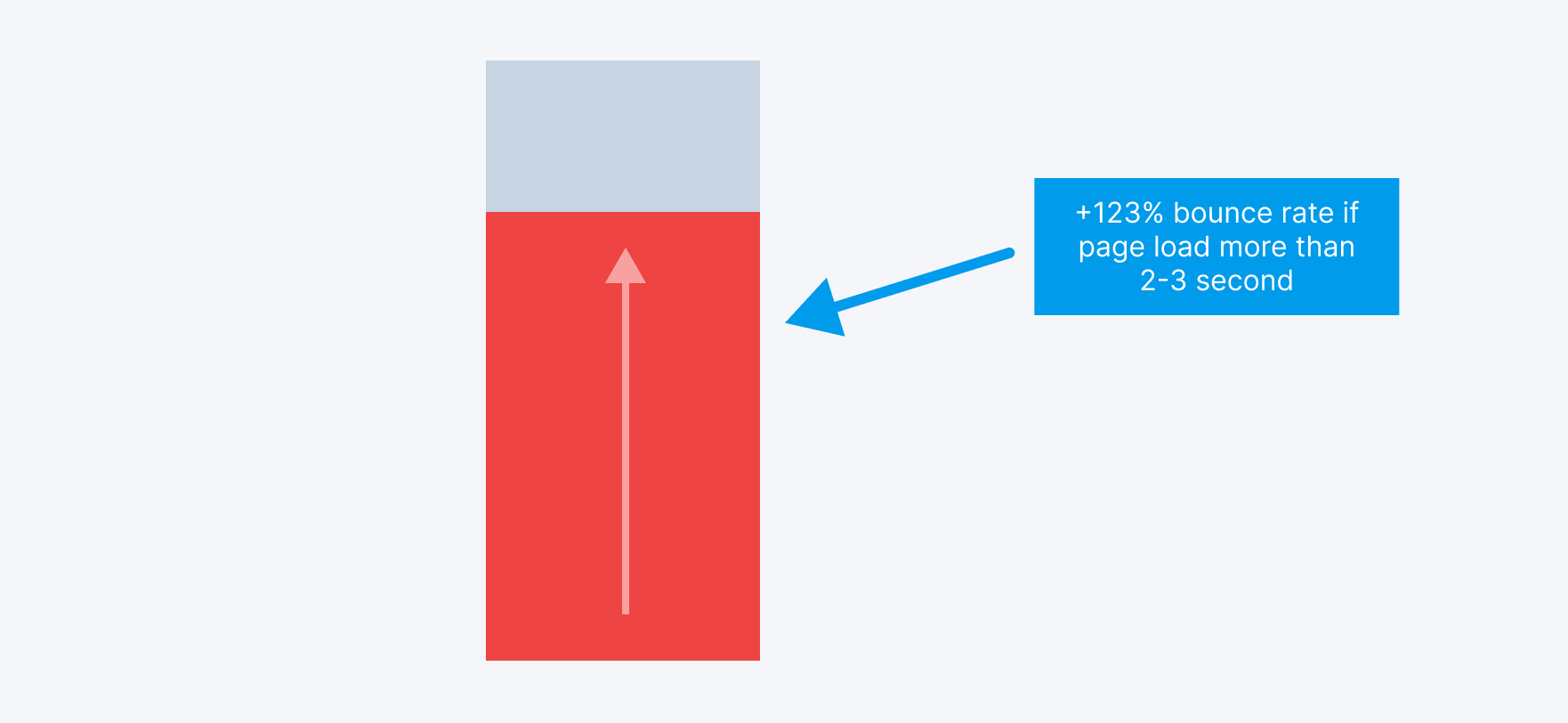
A 123% increase in bounce rates is observed when page loading times surpass just one second. As users become increasingly impatient with slow-loading websites, they are more likely to leave, significantly impacting conversion rates and overall user engagement.
Tip: Optimize website speed by compressing images, reducing HTTP requests, and leveraging content delivery networks (CDNs) to ensure faster load times and retain users.
67% of Customers Abandon Brands Due to Poor Experiences
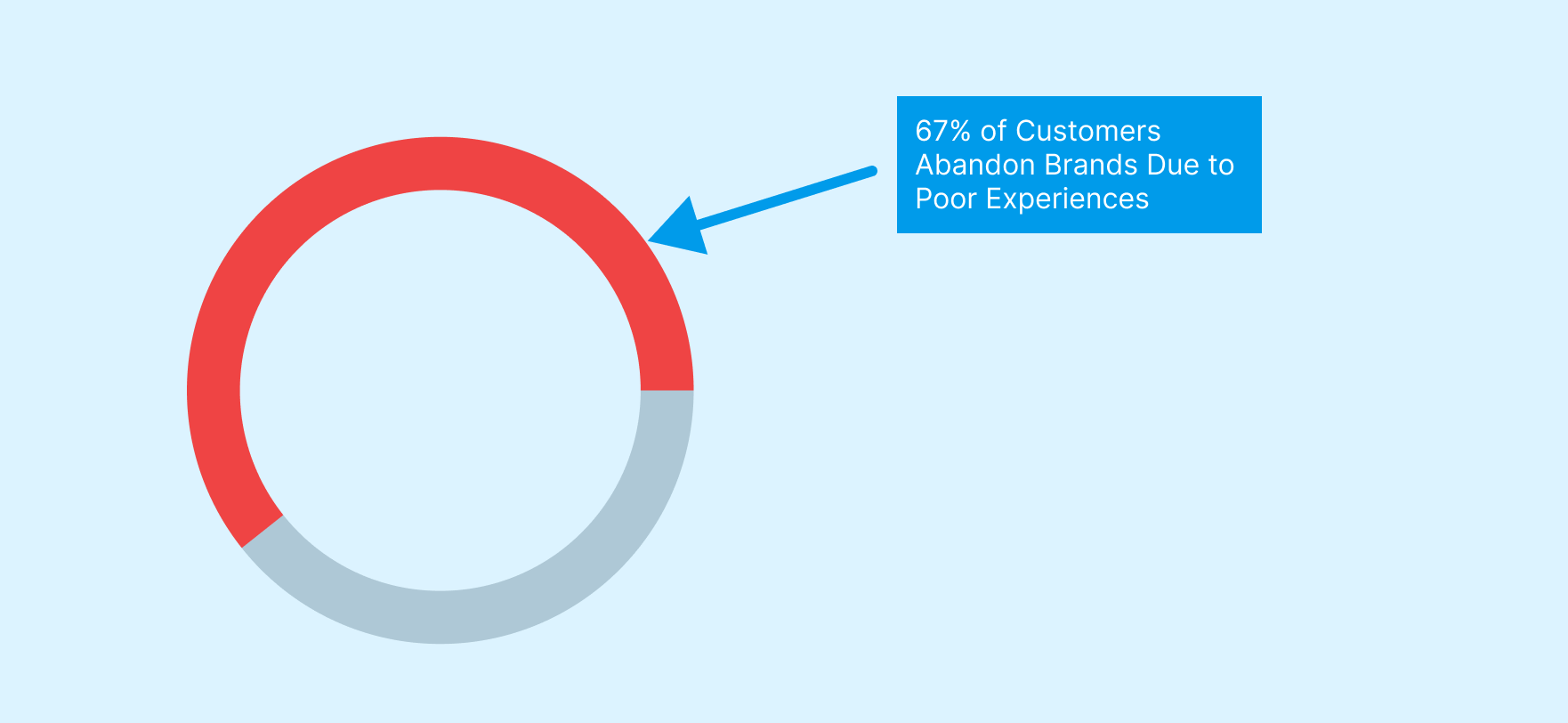
Customer loyalty is fragile. Research shows that 67% of customers leave brands due to negative experiences, whether it’s a sluggish website, confusing navigation, or poor mobile optimization. Once customers have a bad experience, they are far less likely to give a brand another chance.
Tip: Continuously gather and analyze customer feedback. Tools like Qualtrics or SurveyMonkey can help you measure user satisfaction and identify specific pain points in your digital experience that need attention.
Better UX Can Increase Conversion Rates by 200%
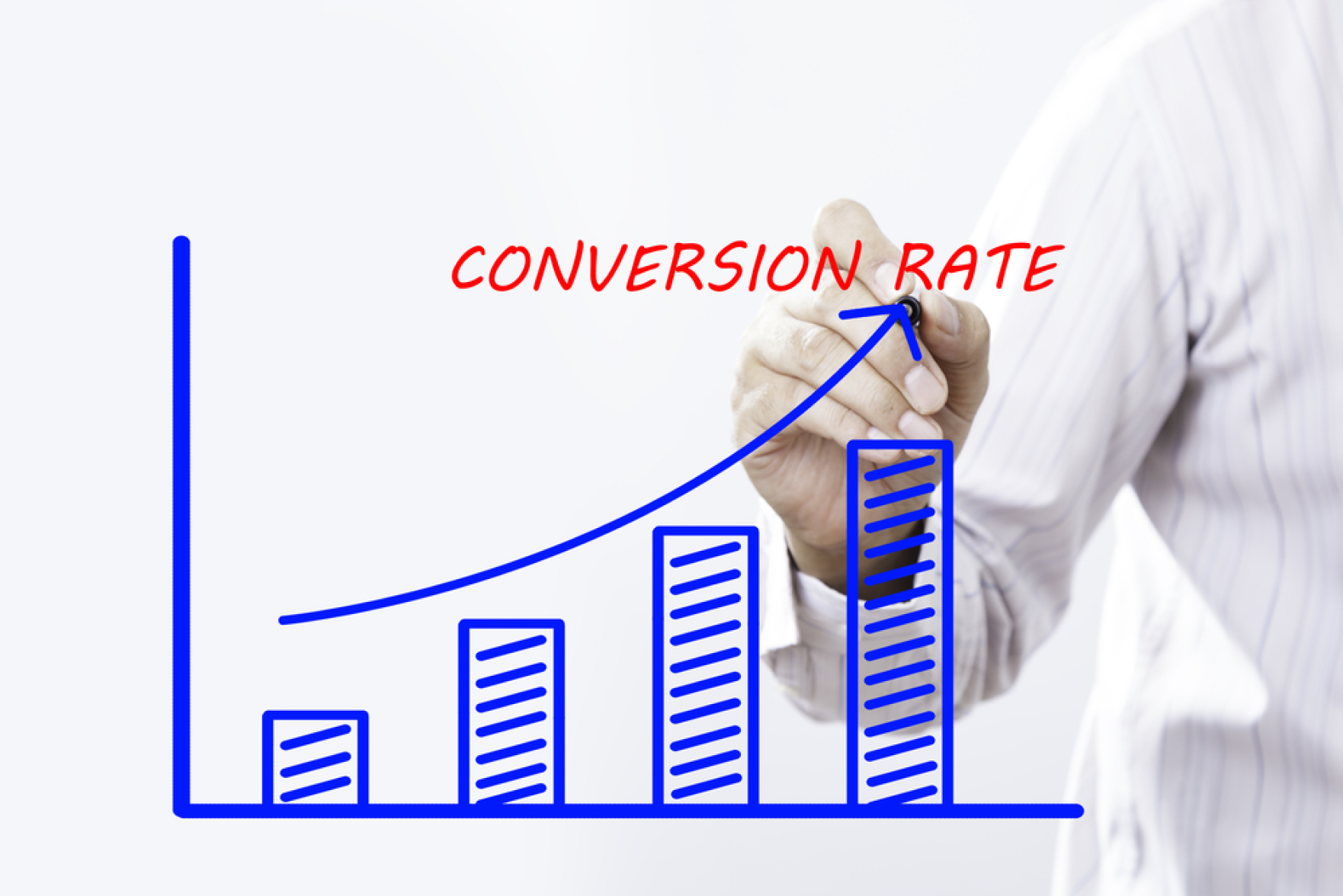
Good UX doesn’t just mitigate losses—it drives measurable gains. Studies show that improving your UX can increase conversion rates by as much as 200%, transforming more visitors into paying customers and driving sustainable business growth.
Tip: Employ A/B testing to refine your conversion funnels. Test different design elements like call-to-action buttons, form fields, and layout configurations to find what resonates best with your audience and optimizes the user journey.
89% of Users goto competitors after a poor user experience
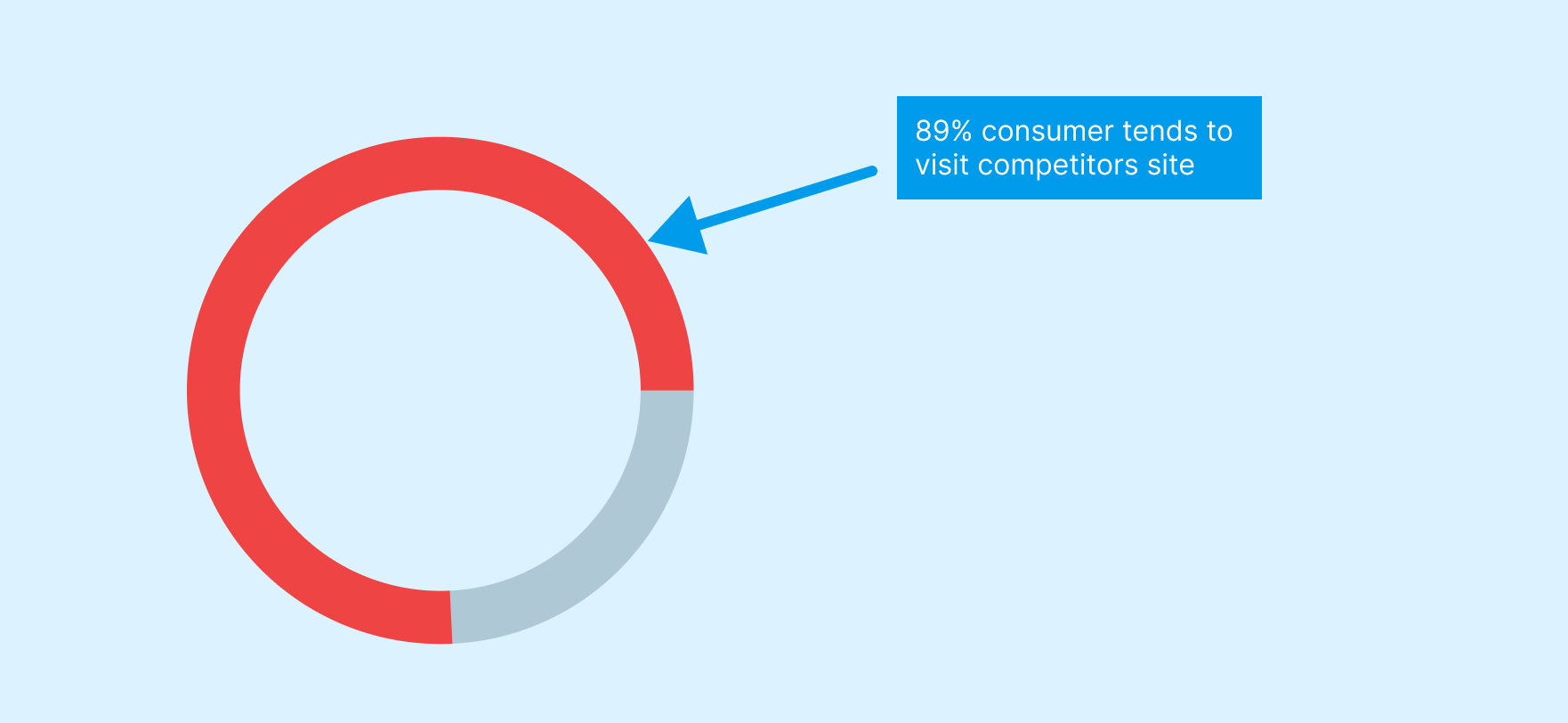
When users encounter some issues, they’re more likely to abandon your website in favor of a competitor who offers a smoother experience. The result? Lost revenue, diminished brand loyalty, and potentially long-term damage to your reputation.
Tip: Regularly optimize your site through usability testing, performance enhancements, and design updates. Stay ahead of competitors by ensuring your platform is fast, easy to navigate, and visually appealing across all devices.
Conclusion
The statistics make one thing abundantly clear: bad UX is costly—not just in terms of financial loss but also in lost customers, damaged reputations, and missed opportunities. Investing in creating seamless, intuitive, and responsive digital experiences is no longer a luxury; it’s a necessity. Businesses that embrace UX as a core business strategy will not only avoid the high costs of bad UX but will also see their revenue, customer satisfaction, and brand loyalty soar.
Now is the time to invest in UX—and watch your business thrive.
Subscribe to my newsletter
Read articles from Sandip Bhandari directly inside your inbox. Subscribe to the newsletter, and don't miss out.
Written by

Sandip Bhandari
Sandip Bhandari
Hello Folks, Myself Sandip Bhandari from NEPAL I’m a Product Designer with 2 years of experience designing engaging and user-friendly interfaces for web applications for both desktop and mobile .